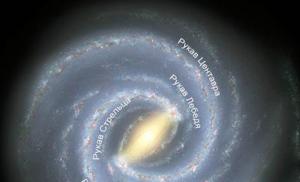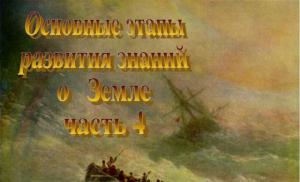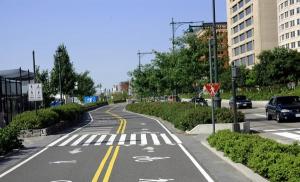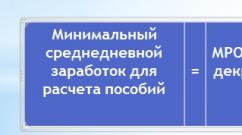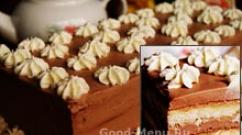Giovanni Boccaccio - biography, information, personal life. Giovanni Boccaccio: biography and best works Works of Boccaccio list
The outstanding Italian writer Giovanni Boccaccio (1313-1375), like Dante, was born in Florence. Little is known about his childhood. Boccaccio was about fourteen years old when his father, a fairly famous Florentine merchant, apprenticed the young man to a major merchant in Naples, an important commercial and cultural center of Italy at that time. Only outwardly obeying the will of his father, Boccaccio devoted all his free time to the study of literature, primarily Italian. Four years later, having come to terms with the fact that his son would not become a merchant, his father ordered him to study canon law, however, the lucrative profession of a lawyer did not attract Boccaccio.
Thanks to his father's money and position, Boccaccio was able to enter the secular and artistic society that surrounded the Neapolitan king Robert of Anjou. It was at this time that he met Giotto, the brightest figure of the Italian Pre-Renaissance, and was so impressed by the personality of this artist, architect, sculptor, poet and wit that he later made him one of the heroes of the Decameron. At the court of King Robert, Boccaccio also met Maria d'Aquino, who, in accordance with the concepts of medieval troubadour poets, became his lady of the heart; Boccaccio later brought her into the Decameron under the name of Fiammetta.
During this period of creativity (1336-1340) Boccaccio created large number poems praising Fiammetta, two poems and the novel “Filocolo”.
In 1340, his father's affairs went very badly, and Giovanni Boccaccio was forced to return to Florence. Boccaccio did not want to continue his father’s work and eventually became a diplomat in the service of the Florentine Republic, earning great authority in this field. At the same time, he continued to engage in literary creativity and created a number of works imbued with humanistic ideas. Thus, in “Ameto, or the Comedy of the Florentine Nymphs,” Boccaccio, in the image of the main character, the shepherd and hunter Ameto, presents an allegory of a man, at first rude and uncouth, and then softened under the influence of love and virtue so much that the transformed Ameto can contemplate the divine essence. The pinnacle of Boccaccio’s creativity was the creation of the collection of short stories “The Decameron” (1350-1353). During these same years, Boccaccio wrote treatises “On the vicissitudes of fate famous people", "The Origin of Pagan Gods" and others.
In 1363, Giovanni Boccaccio moved from Florence to the small town of Certaldo, devoting himself entirely to literary pursuits, and above all to the work of Dante. Boccaccio created the biographical work “The Life of Dante” and a commentary on the “Divine Comedy”, and in last year life (1375) gave public lectures dedicated to the great work of Dante.
Biography - BOCACCIO GIOVANNI (1313-1375)
Giovanni Boccaccio - Italian poet and writer of the early Renaissance, humanist. Born in 1313, probably in June or July. He was born in Florence and became the fruit of the love of a Florentine merchant and a French woman. Perhaps it is because of his mother that some sources indicate Paris as his place of birth. Giovanni himself called himself Boccaccio da Certaldo - after the name of the area where his family came from.
Around 1330, Boccaccio moved to Naples: despite the boy’s literary talent, which was noticeable from an early age, his father saw him in the future only as a merchant, so he sent him to learn the intricacies of commerce. However, young Boccaccio showed neither ability nor interest in trading. The father eventually lost hope that his son would continue his work, and allowed him to study canon law. But Boccaccio did not become a lawyer; his only passion was poetry, to which he had the opportunity to devote himself only much later, after the death of his father in 1348.
Living in Naples, Boccaccio becomes part of the entourage of King Robert of Anjou. It was during this period that he became a poet and humanist. His friends were scientists, educated people, influential people. Giovanni read ancient authors avidly, and the environment itself greatly contributed to the expansion of his ideas about the world. It is with Naples that a fairly large period of its creative biography. In honor of his muse, whom he called Fiametta in his poems, he wrote a large number of poems; in addition, the poems “The Hunt of Diana”, “Theseid”, “Philostrato” were created, as well as a prose novel, which were of great importance for the formation of new Italian literature.
In 1340, his father, who by that time was completely bankrupt, demanded Boccaccio's return to Florence, although he, as before, was indifferent to commerce. Gradually the humanist began to participate in political and public life cities. In 1341, a friendship appeared in his life, which he carried throughout his life - with Francesco Petrarch. Thanks to this relationship, Boccaccio began to take himself and life more seriously. He enjoyed great influence among the townspeople; he was often given diplomatic assignments on behalf of the Florentine Republic. Boccaccio devoted a lot of energy to educational work, aroused interest in antiquity and science, and personally copied ancient manuscripts.
In 1350-1353 Boccaccio wrote the main work of his life, which glorified him for centuries - “The Decameron” - a hundred short stories that were ahead of their time, creating a vivid panorama of Italian life, imbued with freethinking, lively humor, and ideas of humanism. Its success was simply stunning, and in different countries, into whose languages it was immediately translated.
In 1363, Boccaccio left Florence and came to Certaldo, a small estate, where he completely immersed himself in his books and lived contentedly with little. The closer old age loomed, the more superstitious Boccaccio became, the more seriously he took faith and the church, but to say that there was a turning point in his worldview would be a great exaggeration. This is evidenced by his work and the apogee of friendship and unity of views with Petrarch. With the works written in these years dedicated to Dante, a new type of literary criticism began to develop. He gave public lectures on the “Divine Comedy” until a serious illness knocked him down. The death of Petrarch made the strongest impression on Boccaccio; he outlived his friend by a little less than a year and a half. On December 21, 1375, the heart of the great humanist, one of the most educated people in Italy of his time, stopped.
2226
16.06.14 14:22
Boccaccio's statue takes pride of place at Florence's Uffizi Palace, and his work has become a source of inspiration for many famous writers, including William Shakespeare.
The Long Path to Literature
Giovanni Boccaccio was born 701 years ago in Paris: his mother was French. She gave birth to a boy from the merchant Boccaccino da Cellino.
A respectable, wealthy Florentine took his son in when he was just a baby. And already at the age of ten, the merchant, wanting to teach his son the basics of a commercial craft, sent Giovanni to a merchant he knew. The boy desperately resisted and did not want to learn the basics of commerce (he began writing poetry early and saw his calling in this). So the teacher, who fought with him for more than five years, sent the pet back to his father's house.

But the strict father was not so easily confused. For almost a dozen years he kept his son in Naples, where he gnawed at the granite of the science he hated. During this period, he wrote the poem “Filostrato” and the novel “Filokolo” (based on medieval works). Then dad relented and allowed the heir to move on to studying canon law.
However, the future humanist had to wait a little longer before devoting himself to his favorite work. This happened only at the age of 35, when his father passed away.
Petrarch's influence
Among Boccaccio's acquaintances there were many noble persons and scientists. He led a rather wild life, indulged in love pleasures and drew inspiration from them. He had a special favor for a certain Maria; later he depicted this image dear to him in the story “Fiametta”.
When Giovanni met Francesco Petrarch in Rome in 1341, he decided to put an end to his protracted youthful amusements and became more serious. The talented friend had a very good influence on his younger comrade. It was then that the “Fiesolan Nymphs” were born (the poet drew motifs from Ovid’s “Metamorphoses”).

After 8 years, Boccaccio settled in Florence. It was he who was delegated to inform Petrarch about the end of his exile (the poet was invited to head the department at the University of Florence).
Boccaccio was engaged in creativity, but at the same time he carried out various orders from the powers that be, acted as a diplomat and ambassador in resolving conflicts.
The best works of Giovanni Boccaccio
Contributions to science and literature
On the family estate located in Certaldo, the poet and scientist spent a lot of time studying ancient treatises and copying priceless manuscripts. He made a lot of efforts to restore the glory of the library of the monastery of Monte Cassino (notes written by the hands of Homer and Plato were kept there), and was one of the founders of the Greek language department in Florence.
He owns a fundamental (15 volumes) work written in Latin, “Genealogy of the Pagan Gods” and the collection “On Famous Women” (106 biographies of great representatives of the fair sex, starting from the ancestress Eve, ending with Joanna, then ruling in Naples, with whom the writer was I personally know you).

The great Italian is known to his descendants, first of all, for the sparkling “Decameron”. The plot is based on the stories of ten “plague refugees” who, having settled in the countryside, entertained each other with funny and instructive stories. The narrator characters (three young men and seven ladies) are very eloquent: the collection consists of 100 episodes - from openly erotic to tragic. The book was written in 1352-1354.

For only two years, Boccaccio managed to head the department dedicated to Dante’s poem at the University of Florence. Petrarch died in 1974. best friend survived him by less than a year and a half. The life-loving poet and scientist died on December 21, 1375.
Boccaccio, his activities and works. – Assessing him as a humanist. – Decameron and its meaning. – Boccaccio’s attitude towards monasticism and the clergy. – Mixing the Christian with the pagan in the works of Boccaccio and later humanists. - “Conversion” by Boccaccio.
He belonged to the same generation as Petrarch, who was only nine years younger than him (born 1313) and died the very next year after the death of his friend (1375). As people of the same generation, they have much in common with each other, and the whole difference between them comes from the dissimilarity in mentality and character: Boccaccio in his works is less subjective than Petrarch, and shows less ability - and less inclination - to formulate new aspirations , expressed more in his general mood than in specific thoughts. Boccaccio's activities belong to Naples, where he managed to penetrate into high society in his youth, and Florence, of which he was a citizen and where he was based in 1349 and the following year he began to receive diplomatic missions to various governments and to the papal curia; by the way, he was instructed to go to Petrarch (1351), when Florence returned his citizenship rights, with an offer to settle in the city where his ancestors came from. Boccaccio had met Petrarch even earlier, and a friendship arose between them, maintained by correspondence and personal meetings, and the younger of these two humanists even became the first biographer of the elder: they were brought together by a common desire for poetry and the study of classical antiquity, which was one of the manifestations of the new mood spirit. Boccaccio, for his time, possessed great learning in classical subjects, as evidenced by his Latin works (on the genealogy of the gods, on famous women, on the misfortunes of famous husbands, on mountains, forests, springs, etc.); He personally copied manuscripts with ancient works, compared texts, studied Greek with Leontius Pilate, whom he lured from Venice to Florence, read Homer with him and translated the latter into Latin. This side of Boccaccio’s activity is important in the history of the classical Renaissance, while his Italian works are of a poetic and fictional nature, and between them the famous “ Decameron"belong to the history of national Italian literature.
Giovanni Boccaccio. Artist Andrea del Castagno. OK. 1450
But it would be a big mistake to think that the humanist Boccaccio manifested himself mainly in his studies of the classical world and in his works written in Latin. In this language, he wrote scientific studies, which were collections of factual material, but he most manifested his Self in his Italian “Decameron,” which does not attract the attention of historians who identify humanism with classicism. Perhaps it is best to see in the works of Boccaccio the fallacy of identifying humanism and classicism, an identification made, however, by the humanists themselves and for a very understandable reason: developing a moral worldview, in accordance with which the development of the individual properties of the individual and its social activities should be directed, the humanists saw in classical literature a means to achieve this goal of personal education, but for For many people, the goal was overshadowed by the means, and then they, being classics, did not yet turn into humanists; in most cases, the interest in antiquity, aroused by humanistic aspirations, was, indeed, an indicator of belonging to the movement in the eyes of the representatives of humanism themselves. It is not surprising that later historians narrowed the meaning of the entire movement, seeing in it one of its classical sides. From this point of view, the researcher Vocht made a completely incorrect assessment of Boccaccio, who analyzed only his Latin works and exposed him as some kind of penny-pincher and pedant - a view that also found a place in elementary textbooks. Boccaccio was by no means an inveterate classicist, neither in the sense that he did not recognize other authorities than the ancient ones, nor in that he had no interest in anything that did not come into contact with the purely scientific studies of his ancient world. Many medieval concepts even retained their power over him: in his works, Boccaccio cites medieval ones alongside classical authorities; he shares the old superstitions rejected, for example, by Petrarch; in his essay on famous women he speaks not only about women of the ancient world. Only later humanists turn away from the Middle Ages, as from an era in which there could be nothing interesting for them. And Boccaccio’s humanism was expressed not only in the fact that he defends poetry from the attacks of theologians and monks, proving that a Christian can also engage in it, but also in everything in common cheerful, anti-ascetic mood. He did not deny the medieval worldview from a philosophical point of view, but his ridicule of monks who lived in discord with their ideals had a murderous effect on this worldview. The philosophy of Boccaccio’s works is the opposite of the asceticism of the Middle Ages: the goal of life is happiness; human nature is noble, and the good of the individual lies in its all-round development and in the wide use of what nature provides, although deprivation may have a meaning, but only one that strengthens character. Petrarch, an extremely subjective person and prone to reflection, is interested mainly in his own self and analyzes it like a theorist, but Boccaccio also defends someone else’s individual right against everything that stands against a person’s personal aspirations, for example, in love, which is hindered by ascetic views , or class partitions. Boccaccio is a kind of democrat (not in the political sense) and a cosmopolitan, defending the moral character of the individual, more objective than Petrarch, an individualist, treating with great interest the inner life of others, not only because it may resemble his own, but because the same interest with which he relates to both nature and modernity.
All these features of Boccaccio's works found their fullest expression in his Decameron. It is known that this is a collection of short stories that seven young beauties and three young men tell each other in the evenings while passing the time in a charming villa, where they retired from Florence during the terrible plague of 1348. From a special literary point of view, in “The Decameron” the artistic retelling of the contents of various Italian chronicles, earlier short stories, fablio, legends, ballads and folk jokes was brought to the highest degree of art, which created Italian prose and caused a number of imitators not only in Italy, but also outside of it. On the other hand, the attitude of Boccaccio’s “Decameron” to his contemporary society, reflected in it as in a mirror, is important, and since this book especially affects monks and clergy, it can be compared with other literary works the end of the Middle Ages, in which the corruption of the church is exposed with mockery, sadness or indignation. Processing traditional material in a new spirit, depicting precisely modern life, which has moved far away from the requirements of the medieval ascetic ideal, Boccaccio preaches with his works a new view of life, the right of the individual to its joys and especially to the joys of love. He finds that “the desire to resist the laws of nature requires too much strength,” and that “those who try to do this often work not only in vain, but even with great harm to themselves.” He admits that he “doesn’t have such powers and that he doesn’t want to have them, and if he had them, he would rather give them to someone else than apply them to himself.” Boccaccio invited his detractors to remain silent and not interfere with him enjoying “the joys provided to us in this short life" By the latter he especially means love, in which he is ready to see great moral and cultural strength; Boccaccio even sympathizes with the monks who break their vow to keep themselves away from women. More instinctively than principled, he speaks out against monasticism in general, pointing out that the main concern and main occupation of the monks was to deceive “widows and many other stupid women, as well as men,” to strive exclusively for “women and wealth.” But a protest against the corruption of morals and a protest against the institution itself are two different things: Boccaccio, contrary to the general spirit of his aspirations, does not yet find arguments against monasticism in itself, arguments with which later humanists will appear. In general, there is no philosophical negation in Boccaccio’s works: he has, for example, to laugh at the widespread abuse of sacred objects in his time, but he was far from the very possibility of composing the pamphlet “De tribus impostoribus” attributed to him, which meant the founders of three monotheistic religions. Boccaccio, like Petrarch, stands on Christian soil, lacking only his philosophical thoughtfulness and religious depth. It is known that Petrarch painted the papal curia in a very unattractive form. Boccaccio's works also ridicule the vices of the clergy. In them he mourns the corruption of the church, and one of his images of the papacy and the clergy directly justifies the fact that in one short story Abraham (the Jew whose conversion is discussed), having met Rome, “not only does not become a Christian from a Jew, but if Even if he accepted Christianity, he would undoubtedly return to Judaism.” Standing, like Petrarch, at the crossroads between two worlds, revolving in traditional medieval forms of religion and morality, calling the pagan fables with which he himself filled his writings madness, Boccaccio, behind external orthodoxy, hid a secular spirit aimed at the earthly: he did not He hated, but loved, not imagining anything better that would be worth cherishing, except for the love of fame and riches.
Boccaccio also has works of religious content, but he begins to involve pagan nomenclature and phraseology in the presentation of Christian objects: in the eclogue “Pantheon” he depicts under pagan names biblical story, calling, for example, Christ the naked Lycurgus, who turned Thetis into Bromius (the miracle at Cana). In the novel "Filocopo" Boccaccio embellishes the knightly basis with fairy tales, Christian legends and classical myths, bringing onto the stage pagan gods either in the form of real personalities or in the sense of allegorical images of the Christian God, when, for example, he forces Jupiter to send his son Christ to fight Pluto or denotes the pope, as the vicar of Juno. Noting this feature of Boccaccio’s literary techniques, we must keep in mind the later humanists, among whom this mixture of pagan and Christian received special development. This phenomenon is even seen as one of the signs of paganism that characterizes the Renaissance of the 15th century, when it was customary to speak about Christian concepts and ideas using expressions taken from the pagan dictionary.
This fashion, as well as the general desire to restore ancient literary forms, also gives a classical touch to the works of humanists. Indeed, under their pen Christian God turned into "Di Superi", into "Iupiter Optimus Maximus, regnator Olympi, Superum Pater nimbipotens", St. The virgin was designated as "Mater deorum" the saint became divine (divus), excommunication was made by excommunication from water and fire (aquae et igni interdictio). Poet Vida, protégé Papa LeoX, writes a poem in which he depicts the suffering and death of Jesus Christ (“Christiad”), bringing onto the stage a whole mythological apparatus of gorgons, harpies, centaurs and hydras at the moment death on the cross or turning the broken bread into “sinceram Cererem”, and the vinegar with which the thirst of the Crucified One was quenched into “corrupta pocula Bacchi”. Before Pope JuliusII a humanistic speech is pronounced on the same topic of death on the cross, and the latter is compared with the selfless exploits of the Curtii and Decii, with the death of Socrates. Fashion penetrates the official style, and one day, for example, the Venetian Senate turns to the pope with a request, uti fidat diis immortallibus quorum vices in terra geris. Similar examples could be given ad infinitum, but since we see the first cases of such a mixture of Christian and pagan in the works of Boccaccio, although frivolous, but still remaining faithful, the son catholic church, this fashion in itself, as something external and formal, cannot yet serve as proof of the paganism of all Italian humanists, just as, on the other hand, the commitment to studying the ancient world without a new mood and new aspirations did not make a real humanist out of a person. The indicated confusion of the Christian with the pagan in general was one of the manifestations of that desire for the merging of the medieval with the ancient, which characterizes both Boccaccio and Petrarch. Complete religious indifference, partly conscious unbelief, and even paganism were phenomena that developed in the humanistic movement only in the second half of the 15th century.
Boccaccio's inner life was not as rich as Petrarch's life, but his mood, of course, changed over the years. This must be borne in mind in order to properly understand the “treatment” that occurred with Boccaccio when he was about fifty years old. In 1361, the monk Gioachimo Ciani came to him, telling him that he had been sent by his teacher, also the monk Pietro de Petroni, who had died shortly before in Siena, with instructions to warn Boccaccio from the terrible death and hellish torment that threatened him for his sinful life, especially for his wicked writings, if he does not hasten to repentance. Pietro himself, according to the monk, knew all this from a miraculous vision he had before his death. Boccaccio was impressed by Ciani, but Petrarch, in a friendly letter to him, advised him not to forget that many deceptions are committed under the cover of religion, and that let the monk, according to the expressed intention, appear to him, Petrarch, for he, Petrarch, will know how much faith should be given to this monk Some biographers of Boccaccio associate this episode with the idea of some kind of “conversion” of his, but in essence there was no conversion here, and the Middle Ages did not defeat the Renaissance. The fact is that even after Ciani’s visit he did not give up his classical studies and did not stop defending poetry, but if in his old age he is ashamed of the “Decameron”, this sin of his youth, then concerns about the salvation of the soul do not at all color his learned works of the latter period of his life, and on the other hand, even before the conversation with Ciani, Boccaccio was a believing Catholic: the whole difference was that in old age the power of his creativity weakened, and that his works took on the character of a learned collection of facts. And in general, Boccaccio had never before come into such sharp opposition to the Middle Ages as Petrarch did.
Giovanni Boccaccio- Italian poet and writer of the early Renaissance, humanist.
Giovanni Boccaccio was born in 1313 g., in June or July in Florence in the family of a local merchant and a French woman. Giovanni himself called himself Boccaccio da Certaldo - after the name of the area where his family came from.
Somewhere in 1330 he moved to Naples, studied merchant wisdom (at the request of his father), but, not showing any ability for it, began to study canon law. But Boccaccio did not become a lawyer; his only passion was poetry, to which he had the opportunity to devote himself only much later, after the death of his father in 1348.
Living in Naples, Boccaccio becomes part of the entourage of King Robert of Anjou. It was during this period that he became a poet and humanist. His friends were scientists, educated people, influential people. Giovanni read ancient authors avidly, and the environment itself greatly contributed to the expansion of his ideas about the world. A fairly large period of his creative biography is associated with Naples. In honor of his muse, whom he called Fiametta in his poems, he wrote a large number of poems; in addition, the poems “The Hunt of Diana”, “Theseid”, “Philostrato” were created, as well as a prose novel, which were of great importance for the formation of new Italian literature.
In 1340, his father, who by that time was completely bankrupt, demanded Boccaccio's return to Florence, although he, as before, was indifferent to commerce. Gradually, the humanist began to participate in the political and social life of the city. In 1341, a friendship appeared in his life, which he carried throughout his life - with Francesco Petrarch. Thanks to this relationship, Boccaccio began to take himself and life more seriously. He enjoyed great influence among the townspeople; he was often given diplomatic assignments on behalf of the Florentine Republic. Boccaccio devoted a lot of energy to educational work, aroused interest in antiquity and science, and personally copied ancient manuscripts.
In 1350-1353 Boccaccio wrote the main work of his life, which glorified him for centuries - “The Decameron” - a hundred short stories that were ahead of their time, creating a vivid panorama of Italian life, imbued with freethinking, lively humor, and ideas of humanism. Its success was simply stunning, and in different countries, into whose languages it was immediately translated.
In 1363, Giovanni left Florence and settled on a small estate in Certaldo, completely immersing himself in creativity. Until he was overcome by a serious illness, he gave public lectures on the “Divine Comedy”.
A big shock for Boccaccio was the news of the death of his friend Petrarch; he outlived his friend by a little less than a year and a half.
December 21, 1375 the heart of the great humanist, one of the most educated people in Italy of his time, stopped.

